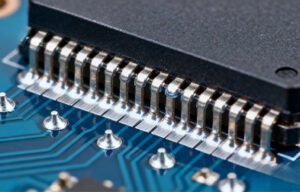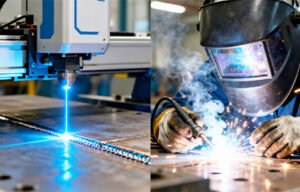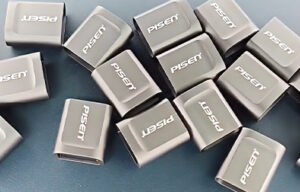Introduction
Advantages of Laser Welding in Kitchen Appliance Manufacturing
In today’s competitive kitchen appliance market, manufacturers are under increasing pressure to deliver products that are not only functional and durable but also sleek in appearance. Laser welding has emerged as a transformative solution that meets these demands. Known for its high precision, low thermal impact, and exceptional finish, laser welding is widely adopted in the production of ovens, stoves, hoods, sinks, and other stainless steel kitchen devices.
This article explores the core benefits of laser welding in kitchen appliance manufacturing, its applications, and why it’s becoming the industry standard for high-quality and high-efficiency fabrication.
Overview of Kitchen Appliance Manufacturing Challenges
Kitchen appliances face strict requirements, both functionally and aesthetically. Traditional welding methods often struggle with:
-
Visible weld seams
-
Warping due to heat
-
Labor-intensive post-processing
-
Inconsistent weld quality
These challenges demand an advanced solution—and that’s where laser welding offers unmatched advantages.
What Is Laser Welding?
Laser welding is a non-contact process that uses a concentrated beam of light to melt and join metal parts. It provides a clean, narrow weld seam and is especially effective for thin metals and intricate designs. In the kitchen appliance industry, it is commonly used to weld stainless steel, aluminum, and coated surfaces.
Key Advantages of Laser Welding in Kitchen Appliance Production
High Precision and Clean Welds
Laser welding offers micron-level precision, which is critical for assembling small or intricately designed kitchen components. This results in:
-
Consistent weld quality
-
Less need for rework
-
Minimal spatter and contamination
Seamless Aesthetics for Consumer Appeal
Today’s consumers demand appliances that look as good as they perform. Laser welding creates smooth, seamless joints, which means:
-
No visible seams
-
Easier cleaning
-
Enhanced visual appeal for stainless steel finishes
Fast and Automated Production
Laser welding machines can be integrated into automated production lines, supporting:
-
Higher throughput
-
Reduced labor costs
-
Repeatable and programmable accuracy
This improves overall efficiency while maintaining high quality.
Minimal Heat Input and Material Distortion
Unlike traditional arc welding, laser welding focuses heat only where it’s needed. This leads to:
-
Less thermal stress
-
No warping of metal sheets
-
Better fit and alignment
Especially for thin stainless steel sheets used in hoods, sinks, and oven enclosures, this is a game-changer.
Enhanced Durability and Strength
Laser welds are not just clean—they’re strong. Deep penetration and controlled fusion create joints that are:
-
Resistant to corrosion
-
Capable of withstanding frequent use and heat
-
Longer lasting than traditional welds
Cost-Effective in High Volume Manufacturing
While the initial investment in laser welding machines is higher, the long-term savings include:
-
Reduced need for consumables (no filler wire or shielding gas in some cases)
-
Lower maintenance
-
Minimal post-processing
Materials Commonly Used in Kitchen Appliance Welding
Laser welding is highly compatible with:
-
Stainless Steel (304, 316): Most common material in kitchen products
-
Aluminum: For lightweight components
-
Galvanized Steel: For internal structural parts
-
Coated Metals: Laser welding works well with certain surface-treated materials
Application Scenarios in Kitchen Equipment
Oven & Stove Housing
Laser welding provides smooth corners and robust structure for oven casings and stove panels.
Stainless Steel Sinks
Laser welding offers seamless joints with no visible welds, ensuring hygiene and style.
Cooker Hoods
Due to their visible placement, cooker hoods require aesthetic welds and strong, non-distorted frames.
Refrigerators & Freezers
Laser welding ensures tight seals and reliable joints in sheet metal housing and doors.
Microwaves and Toaster Shells
Precision and low thermal impact make laser welding ideal for compact appliance fabrication.
Case Study: Stainless Steel Sink Production Using Laser Welding
A leading manufacturer switched from TIG welding to laser welding for their sink production line. The result:
-
25% reduction in production time
-
40% decrease in post-processing effort
-
100% increase in surface finish quality
-
Improved customer satisfaction due to better aesthetics
This clearly demonstrates how laser welding can improve efficiency and product appeal in real-world applications.
Choosing the Right Laser Welding Machine for Kitchen Equipment
When selecting a laser welding system for kitchen manufacturing, consider:
-
Laser Type: Fiber lasers are most common for metal
-
Power Range: Usually 1000W to 3000W depending on thickness
-
Control System: Must support high-speed automation
-
Cooling System: Necessary for long-duration welding
-
Protective Enclosure: For safety in production environments
Look for machines that support multiple welding modes (e.g., pulsed or continuous) to adapt to different materials and thicknesses.
Future Trends in Kitchen Appliance Manufacturing
As consumer demand continues to evolve, kitchen appliance makers are focusing on:
-
Smarter, connected appliances
-
More energy-efficient designs
-
Higher reliance on precision automation
-
Sustainability and reduced waste
Laser welding supports all these trends by enabling cleaner, faster, and more precise production processes that reduce waste and improve recyclability.
Conclusion
Laser welding has become a cornerstone technology in the kitchen appliance industry. Its ability to deliver high precision, clean aesthetics, reduced heat distortion, and faster production cycles makes it the go-to solution for modern manufacturers.
For businesses aiming to improve product quality, streamline operations, and stay ahead of market expectations, investing in laser welding technology for kitchen appliance production is not just an option—it’s a strategic advantage.
111-1024x458.png)


